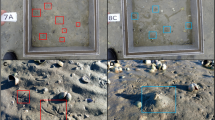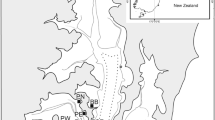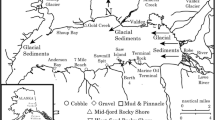Abstract
Estuaries and coastal wetlands are critical transition zones (CTZs) that link land, freshwater habitats, and the sea. CTZs provide essential ecological functions, including decomposition, nutrient cycling, and nutrient production, as well as regulation of fluxes of nutrients, water, particles, and organisms to and from land, rivers, and the ocean. Sediment-associated biota are integral to these functions. Functional groups considered essential to CTZ processes include heterotrophic bacteria and fungi, as well as many benthic invertebrates. Key invertebrate functions include shredding, which breaks down and recycles organic matter; suspension feeding, which collects and transports sediments across the sediment–water interface; and bioturbating, which moves sediment into or out of the seabed. In addition, macrophytes regulate many aspects of nutrient, particle, and organism dynamics above- and belowground. Animals moving within or through CTZs are vectors that transport nutrients and organic matter across terrestrial, freshwater, and marine interfaces. Significant threats to biodiversity within CTZs are posed by anthropogenic influences; eutrophication, nonnutrient pollutants, species invasions, overfishing, habitat alteration, and climate change affect species richness or composition in many coastal environments. Because biotic diversity in marine CTZ sediments is inherently low whereas their functional significance is great, shifts in diversity are likely to be particularly important. Species introductions (from invasion) or loss (from overfishing or habitat alteration) provide evidence that single-species changes can have overt, sweeping effects on CTZ structure and function. Certain species may be critically important to the maintenance of ecosystem functions in CTZs even though at present there is limited empirical evidence that the number of species in CTZ sediments is critical. We hypothesized that diversity is indeed important to ecosystem function in marine CTZs because high diversity maintains positive interactions among species (facilitation and mutualism), promoting stability and resistance to invasion or other forms of disturbance. The complexity of interactions among species and feedbacks with ecosystem functions suggests that comparative (mensurative) and manipulative approaches will be required to elucidate the role of diversity in sustaining CTZ functions.
Similar content being viewed by others
Author information
Authors and Affiliations
Additional information
Received 25 February 2000; accepted 31 January 2001.
Rights and permissions
About this article
Cite this article
Levin, L., Boesch, D., Covich, A. et al. The Function of Marine Critical Transition Zones and the Importance of Sediment Biodiversity. Ecosystems 4, 430–451 (2001). https://doi.org/10.1007/s10021-001-0021-4
Issue Date:
DOI: https://doi.org/10.1007/s10021-001-0021-4




